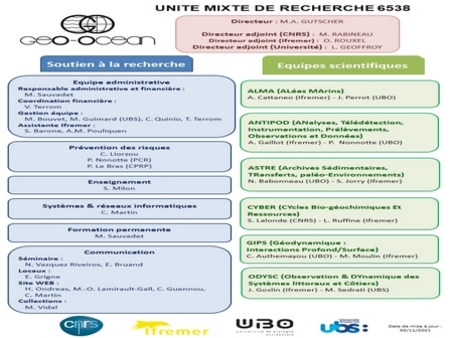CAST - Caribbean Active SeismoTectonics
ANR AAPG CAST (915 582,50 €) – 1 April 2023 - 30 March 2028
Updates
Marine expedition Haïti-TWiST
Haiti has a twin strike-slip fault system with unruptured fault segments, partial reverse slip, and tsunami potential that poses significant hazards to its densely populated areas.
This severe risk level, in one of the least developed countries in the world, warrants further investigation of the complex seismotectonics.
The CAST project developed from a combined International Ocean Drilling Program and International Continental Scientific Drilling Program workshop held in 2019. During the Haiti-Drill workshop, deep drilling targets were identified along the twin Septentrional-Oriente Fault Zone (SOFZ) and Enriquillo-Plantain Garden Fault Zone (EPGFZ). At these defined deep drilling targets, CAST will collect a variety of data to investigate the fault architecture, slip modes, and slip rates of the SOFZ and EPGFZ with aims to characterize their sources of seismic and tsunami hazard in a region prone to damaging earthquakes.
Our three key scientific questions are:
- How and why do stress, strain, and slip rates change along a transpressional plate boundary?
- How is stress released along the faults, e.g. slowly or quickly?
- How did the twin strike-slip fault system come to exist as it does today?
The objective of CAST is to use an onshore/offshore approach to characterize seismic and tsunami hazard sources by investigating past and present-day seismotectonics, while providing site-survey data for the future deep drilling project. Our plan is to increase knowledge of the twin strike-slip fault system’s origin, structure, slip modes, and slip rates.
To do so, we have planned a multi-disciplinary marine campaign (TWiST) and multi-disciplinary land surveys at multiple sites crossing both fault zones.
- TWiST will image the fault structures offshore, record seismicity, and conduct heat flow measurements and fluid sampling. This will allow us to link seismicity to fluid escape and identify the seismogenic depths to which the faults can rupture.
- Land surveys on Haiti include geological, geophysical, and paleoseismological fieldwork along the terrestrial parts of the EPGFZ and geomorphological fieldwork on coral reef terraces along Haiti’s coast, spanning both the SOFZ and EPGFZ.
The work packages (WP) of CAST aim
- to record seismicity (WP1),
- identify the fault structures (WP2),
- and determine their slip rates (WP3) near densely populated areas where little is known about the seismogenesis and tsunami potential.
CAST is a multi-institute collaboration between UMR Géo-Océan, UMR Géoazur, École Normale Supérieure, Institut de Physique du Globe de Paris, and Université d’État d’Haïti (UEH). It will contribute to the new CARIBACT International Joint Laboratory, a collaboration between UEH and Géoazur, which has been funded for 5-10 years.
Moreover, CAST creates a foundation for the international collaboration necessary for our future drilling ambitions and will also greatly impact local inhabitants of Haiti. After our work is completed, 10 of the seismic instruments will be installed permanently to enlarge the Haiti seismic monitoring network onshore.
Project manager:
Chastity Aiken - Ifremer, UMR 6538 Geo-Ocean









